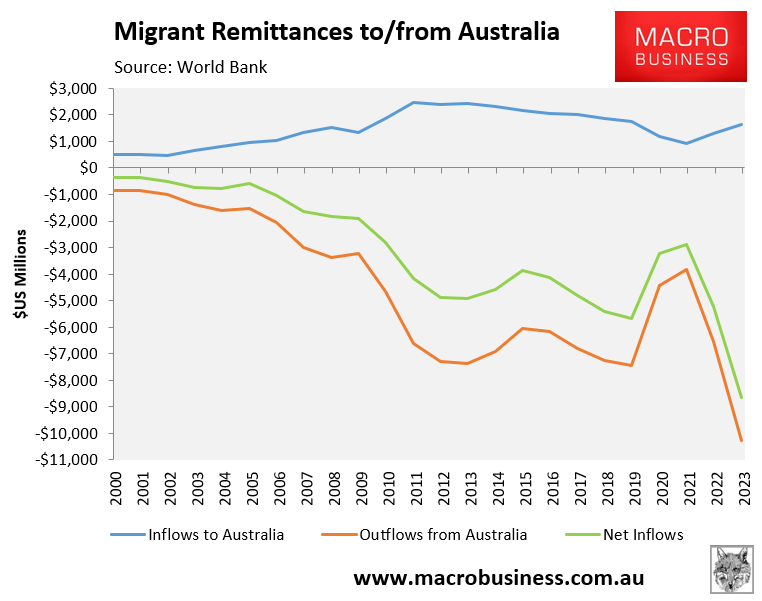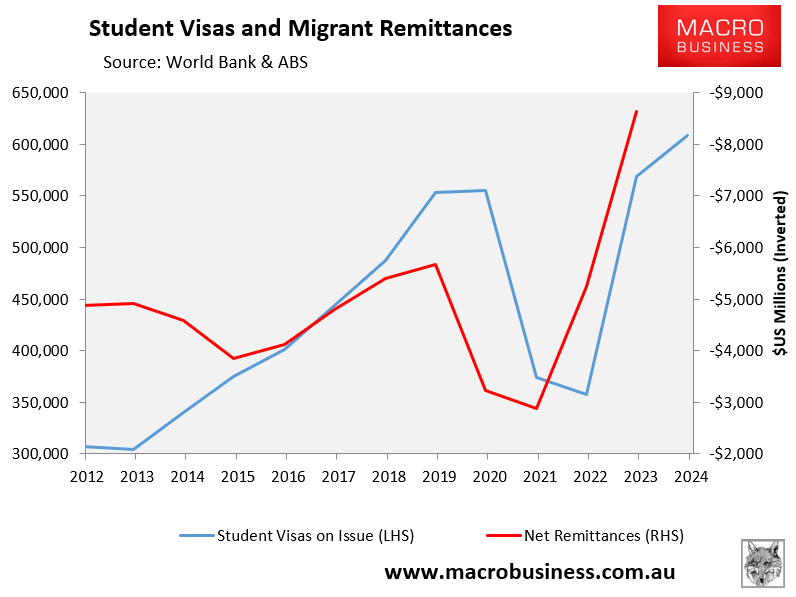The cowardly Albanese government has already walked back its plan to cap international student enrolments at a ridiculously high 40% of total enrolments:

“That is not right. I have seen those reports. That is not what we are intending to do”, Clare told reporters in Sydney in relation to the proposed 40% cap.
Clare described international education, Australia’s fourth biggest export industry, as “an incredibly important national asset” which “makes us money”.
The Australian’s Judith Sloan is the latest economist to debunk the myth that international education is Australia’s fourth biggest export.
Given that many of these students participate in the Australian workforce, Sloan noted that the international student industry does not adhere to the conventional definition of an export industry:
For many international students, their fees and living expenses are actually covered by their workforce participation here. In other words, this chunk has nothing to do with exports.
There is also a problem with the way the Australian Bureau of Statistics estimates the size of the industry.
The annual spending of international students is arbitrarily taken from guesses made by Tourism Research Australia as well as the spending on fees. There is every reason to think the estimates are wide of the mark.
Certainly, the outflow of migrant remittances from Australia, international education could actually be an import:

Indeed, the outflow of migrant remittances has tracked the rise in student visa numbers:

Let’s also not forget that Jason Clare last year spruiked the record boom in international students:
“International education is a critical Australian asset … It was kneecapped by Covid … We are rebuilding our international education sector. We have broken the back of the visa backlog. We have also announced an extension of work rights for students … Students are coming back. This is good news, but there is still a lot more work to do”.
Sadly, after only a week of intense lobbying from the education lobby, Labor already seems to have caved-in and abandoned its modest 40% enrolment cap.
Judith Sloan encapsulated why the federal government needs to “stand firm and reject these entreaties”:
A key issue is the extent to which our education institutions have been prepared to compromise on the quality of the education of local students to pursue revenue from the high fees that international students are prepared to pay.
Too often the experience of local students is class sizes that are too big; international students with very poor language skills; forced group assignments in which locals carry the burden of the work; and extremely soft marking for international students…
The facts are that the education institutions have failed to deal with the negative impact on local students; have relied far too much on underpaid casual staff; and have created bloated and excessively paid central administrations.
The education institutions have been only too happy to enjoy the benefits of unrestricted international student numbers while inflicting the external costs on the wider community. Too often they have effectively become the migration pathway for international students.
There will be many benefits from having a smaller, better managed international student industry.
That summarises the situation perfectly.

